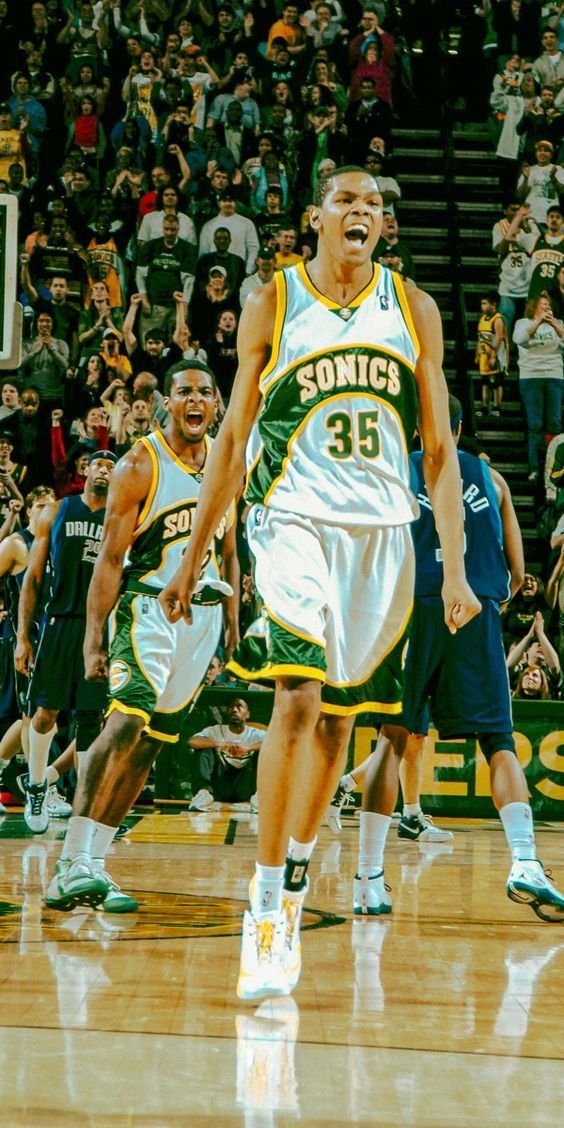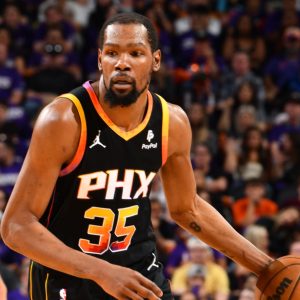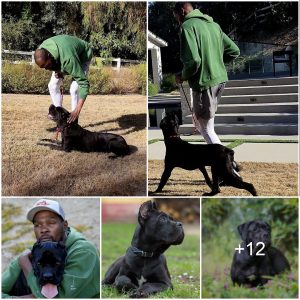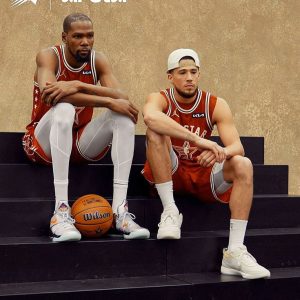For an 8-year-old Kevin Durant, that meant conquering the competition at Seat Pleasant Recreation Center, the one-story, brown-brick building just across the Anacostia River in suburban Washington, D.C., that became the base for everything the boy would achieve.

Before Durant blossomed into the nation’s No. 2 high school prospect, the 2007 National College Player of the Year, the 2008 NBA Rookie of the Year and now a first-time All-Star, his basketball journey began with a daily 15-minute walk to his favorite place.
He ate there. Slept there. Became a player there.
“It was just something I always thought was fun,” Durant said. “If I got in trouble at home, I could always go to the gym and get my mind off it. Really, that’s how it started, just trying to get away from stuff.”
Durant’s hoop dreams rose out of a staunch desire to make the rec center’s youth league team. He fantasized about his inclusion during those walks to the community center off Addison Road, across from the Amoco service station. Pay-to-play didn’t exist in these parts. Kids got cut.

“I thought I wasn’t going to make it,” Durant said. “I was up late thinking about it, sitting up in the room thinking about the day they would post the paper.”
Durant, taller and lankier than everyone his age, made the cut. He wore No. 24. But the kid didn’t set his eyes on a larger goal until the next season, after an unsuspecting woman approached the scrawny star after a show-stopping playoff performance and sparked a conversation that changed his outlook.
“She said, ‘You should change your number from 24 to 23 because that’s how you’re playing out there, like Jordan,’” Durant remembered.
The woman’s words stuck with Durant. From then on, he started watching NBA games and paying closer attention to colleges.
“The dream just kind of expanded,” Durant said. “It started off as something small. I remember thinking I never was going to get there. But then it grew into something that I worked hard for and something I told myself I wanted to get to.”
When Durant, still only 10, told his mother he wanted to pursue basketball as a profession, she asked him if he was sure. Pratt insisted her baby boy take time to think about whether that’s what he really wanted. Durant came back the next day with the same affirmative answer.
“And I made a promise to him that I would help him do whatever he needed to do,” Pratt said.
Durant had no idea what he had signed up for. He now admits he would soon regret the conversation because, “She pushed me like nobody else.”
On the recommendation of a family friend, Pratt entrusted Durant’s development to Taras Brown, a neighborhood coach known around the way as “Stink.” Brown wasn’t just demanding. He was a drill sergeant.
While friends ran the streets, Durant got run ragged. Video games took a back seat to suicides. Homework was followed by hill sprints. Brown never let Durant play pick-up basketball out of fear it would allow bad habits and poor defense. Instead, the two did duck walks, jumped rope and performed shooting drills.
Every day, Durant got out of school, went to his grandmother’s house, did homework and grabbed a snack, then made the trek to Seat Pleasant Rec. Some days, Durant spent so much time at the center his grandmother would bring him food and he’d take naps behind a curtain.
Brown introduced Durant to a nearby neighborhood hill at the corner of L Street and Balsamtree Drive. Seat Pleasant, Md., ballers have named the monster “Hunt’s Hill.” It starts down on 61st Street but is steepest between Balsamtree and Cedar Height Drive, where the scenic view extends from Prince George’s County to downtown in the District.
Durant and his teammates walked or jogged to the hill, a five-minute drive from the community center. They’d sprint up Hunt’s Hill and backpedal down. Some did it once. Others twice. Durant would run until his legs gave out.
“He worked so hard,” Pratt said. “That’s what people don’t get.He worked so hard from 8 years old to the age of when he decided that that’s what he wanted to do. And then from there up until now he works non-stop.”
Pratt tried to continue but her voice gave out, cracking, then going silent as she collected her thoughts.
“It really touches me … I admire him,” she said.
“Those are the fundamentals that I tried to teach my sons,” said Pratt, a former postal worker and self-described disciplinarian who assured her opinion at home was the opinion.
Durant’s father, Wayne Pratt, a federal police officer, was separated from the family early in Kevin’s childhood years. But the two have had a relationship since Durant was a boy and maintain a strong relationship today.
Wanda Pratt grew to respect Brown, though, because he stood for the same principles, and he’d be dammed if little Kevin wasn’t going to fall in line. Brown taught Durant three moves: a pull-up jumper, a two-dribble jump shot and a baseline drive that allowed for several options.
Only once did Durant object to Brown’s directives. Brown had Durant lay flat on the floor while holding a medicine ball in a shooting position as if about to shoot. He was supposed to hold his position for an hour. Durant walked out, retreating to grandma’s house. Barbara Davis played the role of peacemaker, then told her grandson he needed to go back. Durant complied, walking back to the gym to meet Brown and pick up where he left off.
Durant’s dedication led to swift development and spots on decorated AAU teams.
He teamed with Miami’s Michael Beasley while playing for the PG Jaguars and later played alongside Denver’s Ty Lawson with the D.C. Blue Devils.
But one of Durant’s toughest challenges was conquering older brother Tony, who had a burly build and a mind-boggling left-handed game.
“He pushed me and fought me and made it tough for me every day,” Durant said. “Every time I played against him, he would just frustrate me and make me mad.”
Until one day, when Durant was about 17, he settled the score for good during a pick-up game down at the rec. Tony caught Kevin’s crossover attempt and streaked the length of the court for a layup. Of course, he let little brother hear about it. But then Kevin tried another crossover and it led to an emphatic dunk. A dunk so hard Durant hurt his arm but conquered his closest competition.
“That would elevate my game,” Durant said. “Every time I played against him I just wanted to destroy him. That’s how he made me feel and that’s what got me better.”
National Christian went 27-3 during Durant’s sophomore season, the best record in school history. College letters start coming in.
Following his sophomore season, Durant caught the eye of Texas assistant coach Russ Springmann at an invitational tournament in Delaware called the “War at the Shore.” Springmann followed Durant’s path from then on and later sold Texas coach Rick Barnes on Durant.
As a junior, Durant transferred to Oak Hill Academy, a private school in Mouth of Wilson, Va., with a storied history as a basketball factory. There, Durant teamed with Lawson, Eric Devendorf, who later starred at Syracuse, and Jamont Gordon, who went on to Mississippi State. Durant started every game, leading the Warriors to a 34-2 record. Durant averaged 19.6 points and 8.8 rebounds.
Legend has it that before Durant played a game for the Warriors, Oak Hill coach Stephen Smith put Durant in a workout against Josh Smith, then a high-flying senior who now stars for Atlanta. Durant, at only 15, held his own.
The next season, though, Durant’s stardom took off at Montrose Christian in Rockville, Md. It’s where he became the nation’s No. 2 prospect and commanded the attention of every major school in the country.
Montrose, a tiny school off the Randolph Road with a maroon rubber court inside a compact gymnasium that holds 700, was a structured school that helped refine Durant. Coach Stu Vetter, however, will tell you that Durant didn’t need much help. Well, with most things.
Durant didn’t own a sportscoat until he arrived at Montrose. Vetter mandates that his players wear a coat and tie on signing day, and Durant couldn’t come up with one that fit his long arms.
“Now when I see him dressed on the cover of magazines I’m thinking, ‘Man, he’s come a long way,’” Vetter said.
Durant averaged 23.6 points and 10.2 rebounds as a senior. But more than his basketball development, Montrose helped Durant kick up his work ethic a notch. Vetter put Durant on a strict program just to gain admission into Montrose. He had to take summer classes and maintain an acceptable grade-point average.
Once there, Vetter put Durant on an academic program in which he worked closely with former coach Josh Hutchinson and a development program with former assistant David Adkins. With Adkins, Durant did cone and chair drills to improve vision and agility, and with strength coach Alan Stein, Durant tried his best to bulk up.
“Everything we asked him to do he did and excelled at it,” Vetter said.
“It’s just been fun watching him grow the way he continues to grow,” Texas’ Barnes said. “He’s a special individual.”
Barnes relayed a story about Durant that he says epitomizes his character. While Durant was in summer school in Austin last year, he spent a late night in the gym. To the surprise of freshman walk-on Dean Melchionni, a Pittsburgh native who didn’t know anyone, Durant was shooting at a basket with friends when the newcomer walked in. Stunned, Melchionni didn’t know what to do. He walked the other way.
“And all of a sudden Kevin walked toward him and said, ‘Aren’t you the new walk-on?’ ” Barnes said. “He said, ‘I am.’ And Kevin said, ‘Well I’m Kevin Durant. Welcome to the Texas family. Come on down here and shoot with us.’”
That same graciousness has carried over into Durant’s professional life.
During pregame locker room access, Durant patiently removes his headphones — an unspoken signal used by NBA players to tell reporters to bug off — and satisfies any and all inquires. He reaches out to fans at home and on the road and takes pride in signing autographs before games and using Twitter to send unsuspecting fans tickets.
“He has the purest heart that I’ve ever seen in any person,” said Pratt. “I don’t say that because he’s my son. I say that because that’s how I genuinely feel about him. He is just a sweet, sweet human being.
“I’ve always told him that this didn’t have to be you. It could have been somebody else. It could have been somebody else that coach Brown said is special and I’m going to put time in and help him. But it happened to be you so you need to be grateful and thankful.”

{this.setAttribute('onload','this.classList.remove(\'gnt_em_vp_img__yn\')');this.src='https://i.ytimg.com/vi/9D-ybeMjguw/hqdefault.jpg'}else{this.classList.remove('gnt_em_vp_img__yn')})






